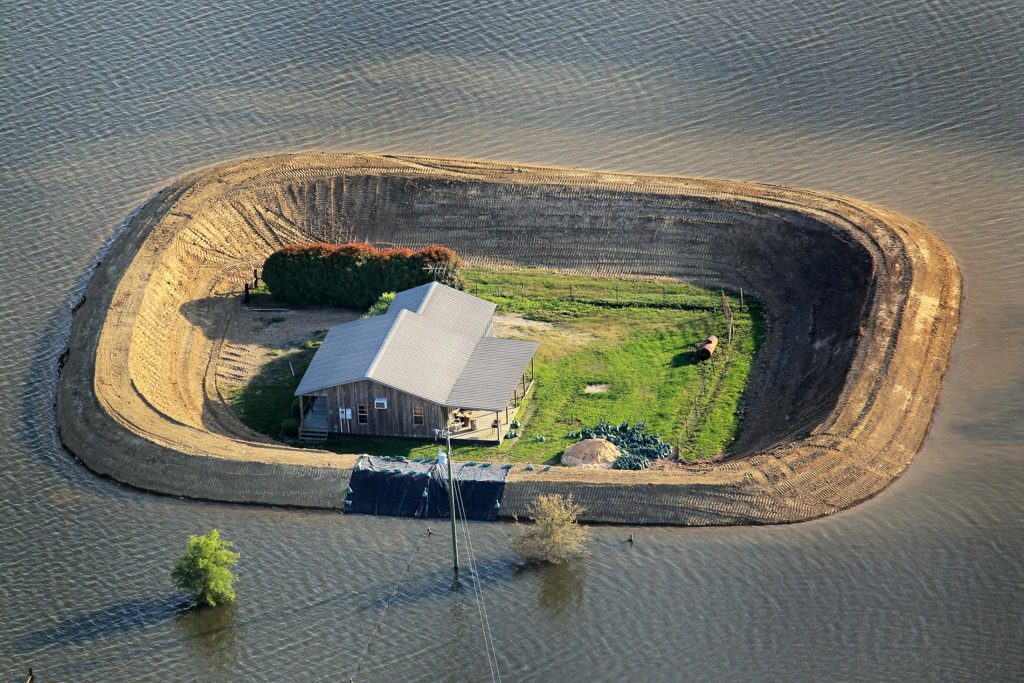
Image: Levee House in Mississippi, Scott Olsen, 2011
“To all of you who choose to look the other way every day because you seem more frightened of the changes that can prevent catastrophic climate change than the catastrophic climate change itself. Your silence is worst of all.” – Greta Thunberg
Unit 18 will continue to explore themes around the Anthropocene, ruins and the forsaken landscapes created and ravaged by our ruthless quest to harvest Earth’s natural resources. In our continuous mission to streamline our lifestyles through technological advancement, we have created an ever-growing climactic monster that rages, disrupts and destroys our fragile planet, leaving nothing but ecological scars in its wake.
This year we will explore these ‘spoils’ through the lense of weather, and in particular water, which often takes centre stage during an environmental crisis.
Humankind’s relationship with water has always been a beguiling one, one that has shaped civilisations, sculpted cities, inspired writers and artists, and captivated architects. Today, the fundamental relationship between water and human habitation is transforming in the wake of an escalating global crisis. Without question, one of the biggest crises facing us today is human driven climate change, with the onslaught of extreme weather in the form of super-storms, hurricanes, tsunamis, landslides, floods, and droughts whose frequencies and intensities continue to increase alongside sea levels that are rising at an alarming rate.
It is widely accepted that global warming has increased both the intensity and frequency of extreme weather events, notably evidenced by the recent floods in Pakistan and Australia, with the former killing thousands and displacing millions. A recent study by German scientists projects that extreme precipitation will increase significantly in regions that are already experiencing extreme rainfall. Man-made global warming has already increased the moisture content of the air worldwide, causing bigger downpours. Each additional degree of temperature increase causes another seven percent increase in moisture in the air, and even larger downpours when storm conditions trigger heavy rains and snows.
From entire cities, virtually surrounded by water such as New Orleans, to the village of Fairbourne in Wales, whose residents could be Britain’s first climate refugees as they watch their homes slowly disappear into the rising sea around them, our planet is tormented with architectural relics that have or will be defined by water. These skeletons of cities, infrastructures, buildings and landscapes, act like an architectural form of memento-mori, proving that no structure is permanent or impervious to the changing desires of a society and a climate in constant flux.
As architects, we would argue that we cannot prevent or cure the impending climate emergencies that surround us, but since the built environment is a major player in the global emission of greenhouse gases, we have a responsibility to educate ourselves on the affect we have on the climate, and to train ourselves in our ability to minimize or even reverse our impact.
It is clear that we cannot control the forces of nature, but can we calibrate them, manipulate them and work alongside them to create new relationships to water, and the shifting environment around us. Could the ever-growing list of architectural relics, lost through greed, technology and climate change become something more than markers of civilisations past, in revealing these, and working with them, could a new future emerge?
We will continue to tackle these issues as only unit18 know how, through the power of the imagination, as without this, no future can exist.
“Men argue. Nature acts.” – Voltaire